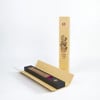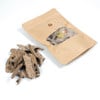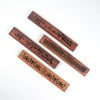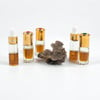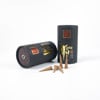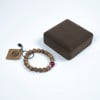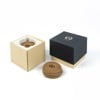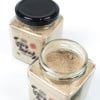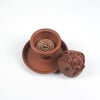Excellent Compresentation of incense
In the spiritual culture of Vietnamese villages, incense, incense - fragrant sticks of powder - are always focused first in the rituals of worship according to traditional national customs. Incense incense has long gone into community life, with the meaning of being an item to commemorate merit and thank for the protection and protection of ancestors, gods, God and Buddha for children and people in each family. water village. This is both a spiritual product and a material product that brings a lot of joy and happiness to life. In any dynasties or periods, incense sticks were burned everywhere according to candles or rings on porcelain bowls and copper urns, or under walls, pedestals, tree stumps, stones...
Each type of incense and incense has a deep meaning. The stick or stick of incense made of bamboo or glue sticks is a symbol of enduring belief. The yellow and red colors of the incense represent glorious victory and enlightenment, in addition to the light and energy that make up the wondrous landscape. The scent of incense extracted from the tree resin also brings growth and development.
The shape of the incense tree is also like a bridge connecting the earth and the fairy world, the living and the dead. Incense sticks and incense sticks in the standing position are considered the fastest stairs straight from the earth to the sky. The round incense with flexible horizontal curves attached to thin cashew strings resembles the steps to heaven. Collectively, all three realms of Heaven, Earth, and Man are connected by the length of an incense stick.
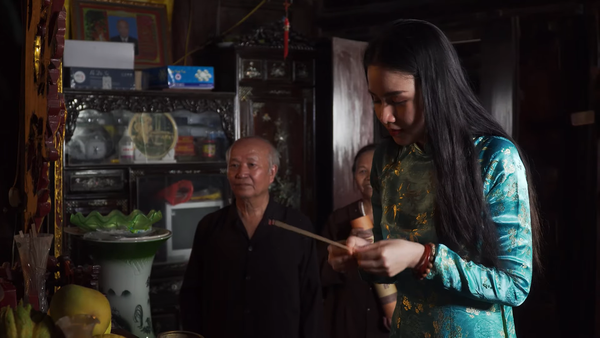
According to folk beliefs, in order to invite the heroic spirit to receive the ceremony, descendants must first have incense sticks to communicate and convey their prayers to their ancestors. Incense and incense are therefore part of the offerings, for Troi Buddha, angels, and earth deities include incense, flowers, lamps, tea, fruit, and food (rice). To bring into full play the power of incense, people often burn incense with the flame of an oil lamp lit from the essence of sesame, peanuts, and beans, which is believed to be the source of light and warmth. Or light incense with matches or flints like lightning from the sky.
In the countryside, almost everyone knows about incense and incense. From a young age, children have watched adults burn incense to worship tools, go to pagodas, go to the market to buy incense and flowers. Women, especially the elderly, always use incense to worship, when going to the market, they do not forget to buy a few bundles of incense to light. When visiting the temple, people often ask for incense cards at the temple called incense to bring back to pray for good luck.
With their kindness and charity, the villagers attach great importance to burning incense and worshiping. Burning incense on the altar is a way for children to dream of their parents, grandchildren and great-grandchildren, to worship their grandparents and ancestors, to thank the heroic spirit for blessing their families with peace, luck and prosperity, as well as for the people of the country. Thank you to the heroes, angels, and gods who have built and protected the village. For young children, burning incense also implies teaching, helping children understand customs, habits, relatives, and the morality of drinking water, remembering the source...
Burning incense has become a noble gesture and custom in the village. Going to pagodas, communal houses and shrines, passing old trees and ruins, many people stop to burn incense. In the Qingming period, each family burns incense at the grave of the owner and the graves of the surrounding neighbors so that warmth, fragrance and peace will come to every home. On the day of absolution of the dead, every place celebrates and offers incense to pray for wandering souls. Each person lights a fragrant incense stick, feels strangely warm, bright soul and good direction.
For many people, incense smoke has become an obsession and clinging in life. Not a day goes by without burning incense, never without chanting. Every time I do something, I burn incense and pray to the gods for help. The rich who have a full tray of food, the poor who don't have anything of value, also sincerely light a few incense sticks. Particularly when worshiping the Buddha, the old people always carry a tray of incense, gold, and incense, which are the things that create a pure fragrance, put them solemnly on the upper hall and light three incense sticks. The first compress is placed in the middle to worship the Buddha, the second one to the right to worship the Dharma, and the third one to be placed on the left side to worship the Sangha. In addition to incense, each person also offers to Heaven and Earth their fragrant heart.
Since ancient times, in the countryside, it is customary to burn incense in odd numbers. Most often there are three compressions, one vertically centered, the other two inclined to the sides. According to the Taoist theory, it is to worship the three stars (Phuc, Loc, Tho) and the Buddhist philosophy is to worship the Three Jewels (Buddha, Dharma, Sangha), the Three Realms (sex, form, formlessness), and the Three Times. past, taste, and future), the three unscrupulous (precepts, concentration, and wisdom). There is also a place where five incense sticks are placed in two rows, each row of three sets up a judgment of three talents corresponding to heaven, earth, and human (heaven, earth, and human) standing in line to rule the world. The outer row of two trees creates a protective posture along with the other three to create the five qi, that is, the five elements that make up the universe: metal, wood, water, fire, and earth (metal, plants, water, fire and earth). .
In addition to the small incense, many people also burn large incense, round incense and, depending on the shape of the burning incense bouquet, send their thoughts like burning incense - I mean, the whole family, I wholeheartedly worship and pray to the gods. Buddha; Perfume spreading in many directions or spreading on the plane is a vow, concentrically watching the nine directions and eight directions through all floors of the earth, heaven...
In addition to paying attention to the incense, people also take care of the incense bowl, which is ceramic and metal, for the incense stick to be inserted in a solemn position and for the freckles to fall into it. On the surface of the incense bowl is often painted a dragon, in the bowl containing sand, rice or ashes of glutinous rice... Depending on the place, the homeowner will display one or three incense bowls arranged according to the principle of yin and yang of the five elements. Usually, in the middle of the altar, there will be a large bowl of incense representing the stars, on top of a pillar is the cosmic axis which is also the place where the incense ring is attached. On the right and left, there are two small incense bowls to create a triple talent and in the two outermost corners there are two oil lamps and candle holders - the existence of the sun and the moon..
Country people attach special importance to rituals and ways of burning incense. Standing in front of the altar, people must also lower their center of gravity and look down; When burning incense, put your hands in front of your chest; when you run out of incense, you bow; and when you offer incense, you bow down. When burning incense, people absolutely do not laugh or tease because they are afraid that the gods will be angry and punish or leave without receiving the ceremony. Many people believe that sincerity will be touched by the gods, so even though due to the humidity, dryness, the degree of holding the fire or setting the fire too loud, it will naturally cause the stick to tilt, break, or burn… they still believe it is an omen. The divine newspaper confirmed it for me.
Also with the belief that when the incense burns, the ancestors are enjoying the ceremony, and the descendants have to wait for the incense to run out before offering thanksgiving and turning into gold. Look at the red incense stick





















